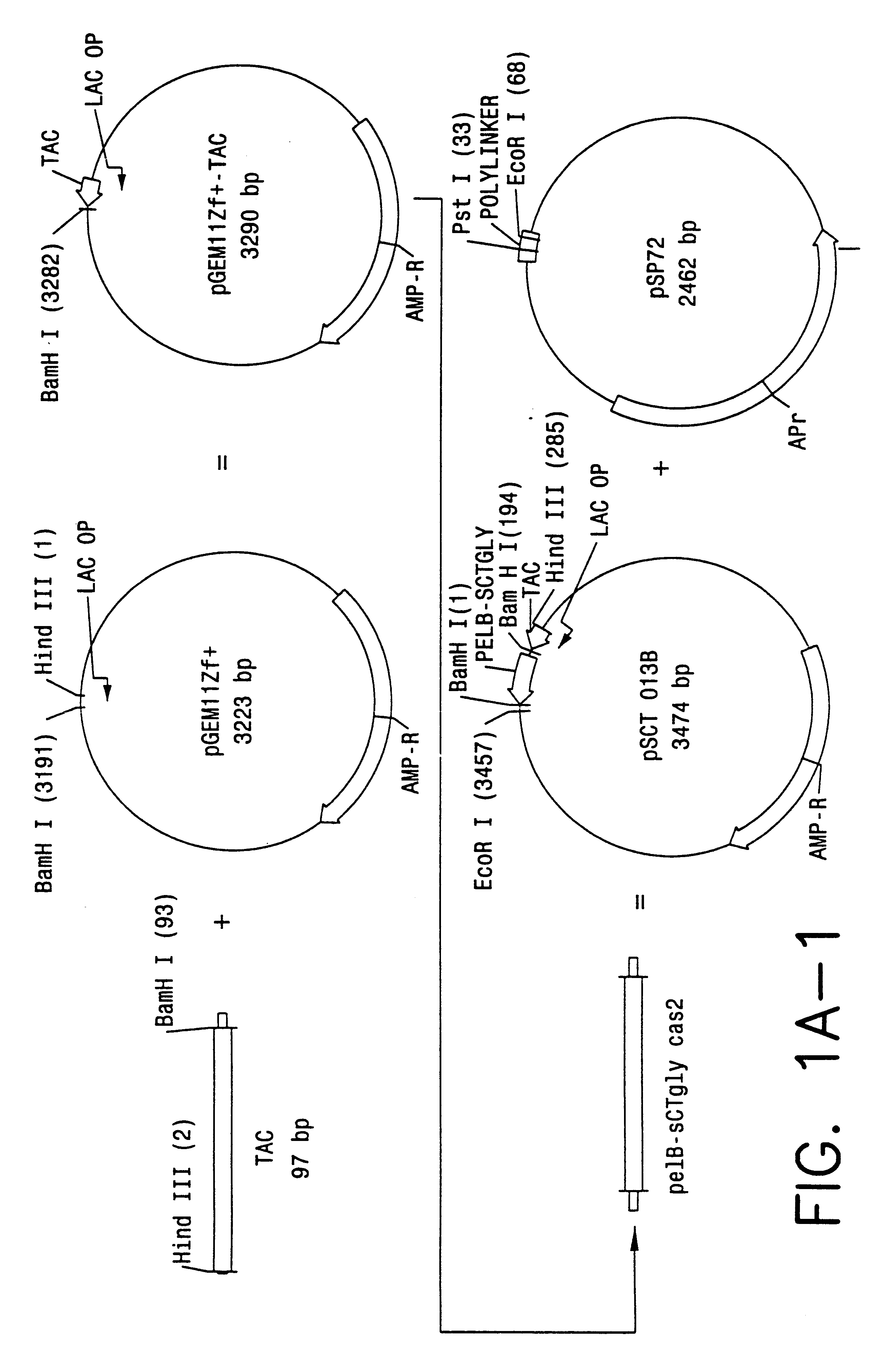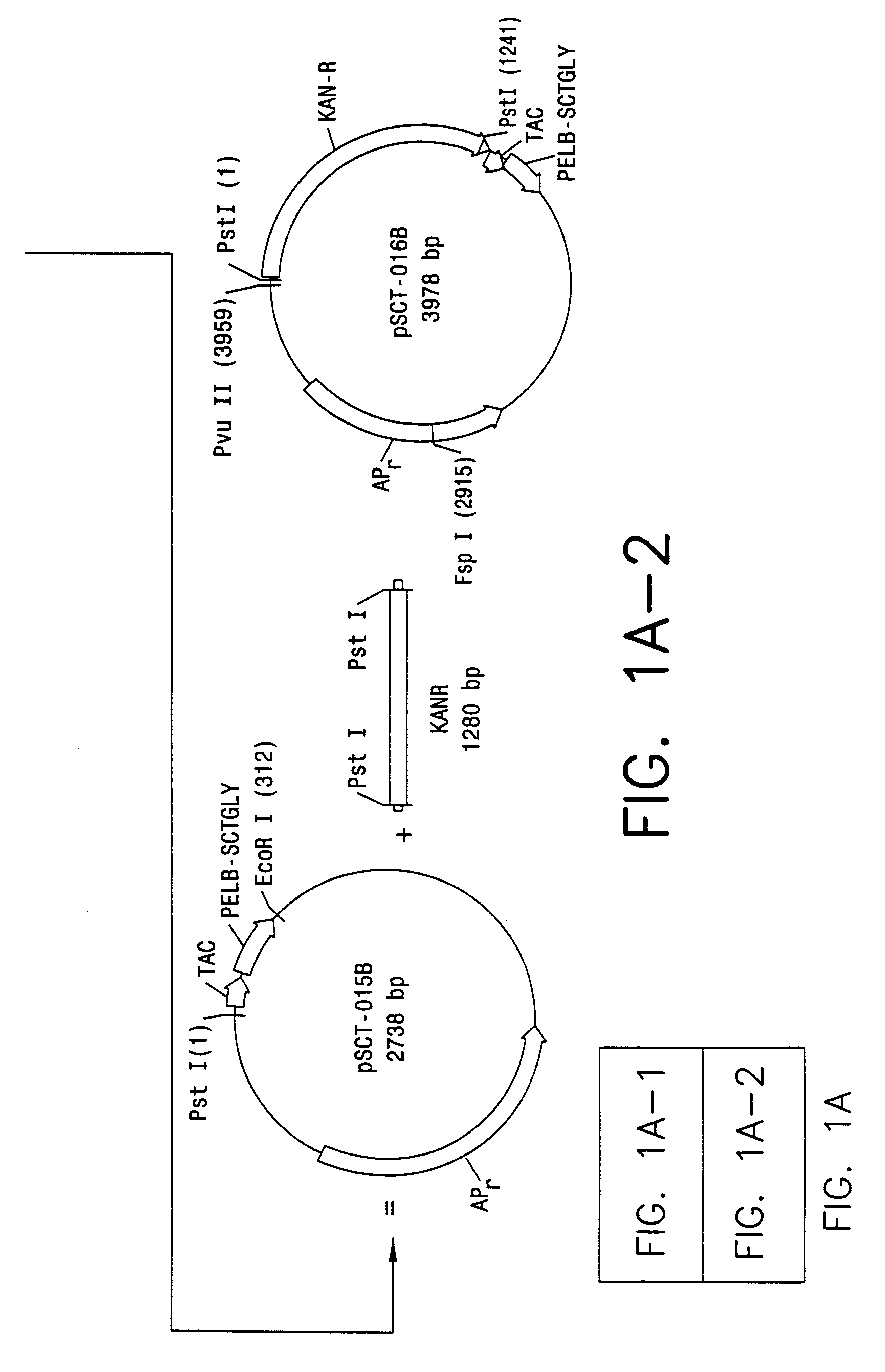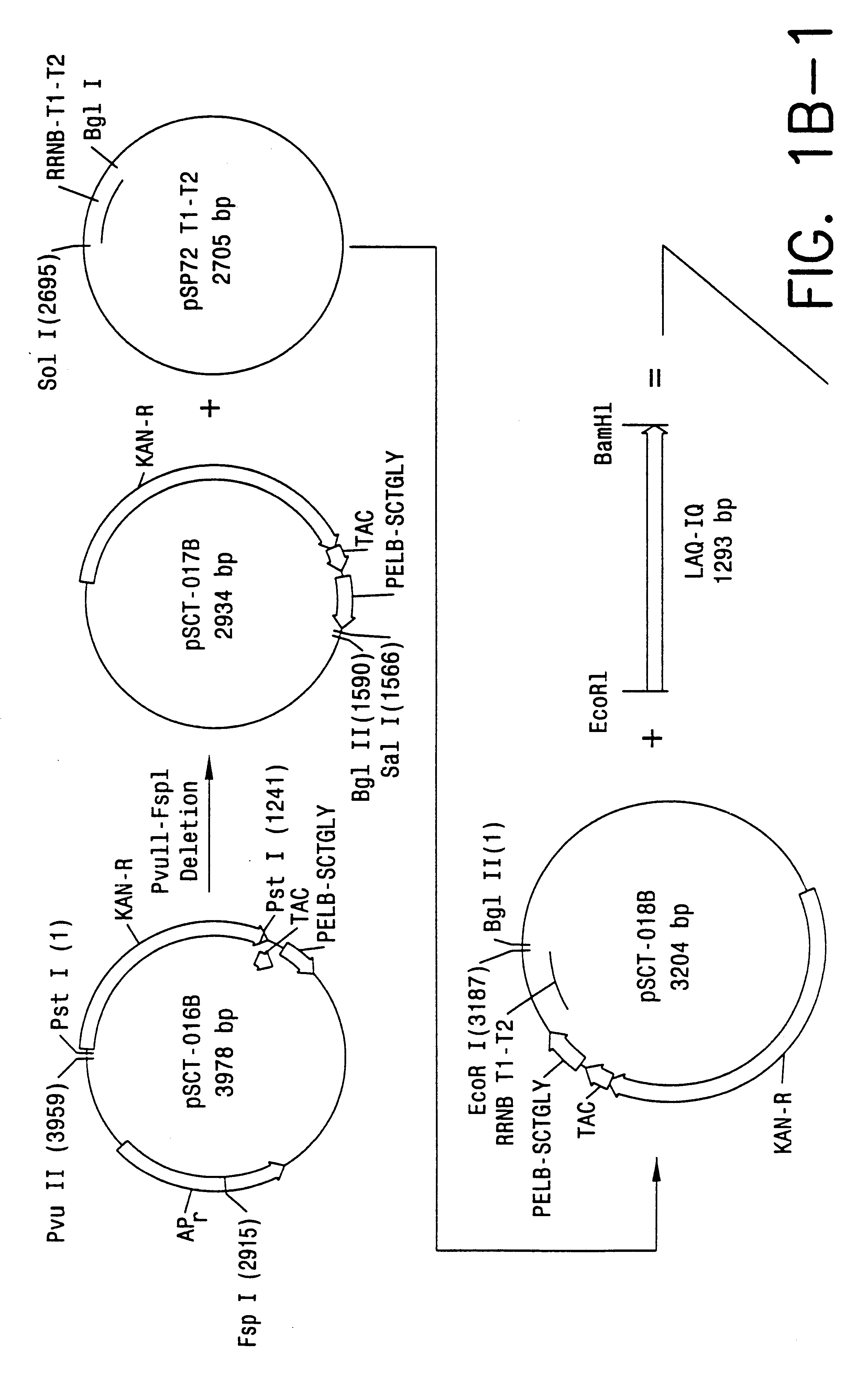Direct expression of peptides into culture media
a technology of direct expression and culture media, applied in the field of recombinant production of peptide products, can solve the problems of reducing the overall efficiency of the process, reducing the ability to perform its basic function, and causing the degradation of the peptid
- Summary
- Abstract
- Description
- Claims
- Application Information
AI Technical Summary
Benefits of technology
Problems solved by technology
Method used
Image
Examples
example 2
UGL 703 fermentation at 1 L Scale
Recombinant E. Coli UGL 703 has been deposited with the American Type Culture Collection (ATCC) as ATCC 98395 in accordance with the provision of the Budapest Treaty relating to the deposit of microorganisms for purposes of patent procedure. The fermentation of the UGL 703 clone was carried out as described under Experimental details. Table 5 summarizes the conditions of this fermentation. Briefly, UGL 703 clone was grown in inoculation medium and used to seed a fermenter containing 1 liter batch medium to give an initial A.sub.600 nm of 0.06 (preference is 0.06 to 0.12). Cells were grown for 6.25 hours (preferred range is from 6.0 to 7.0 hours) until the glycerol in the medium was depleted. Then, the fed batch stage of the fermentation was started and supplemented continuously with the feed medium for 26 hours. The conditions at time zero (beginning of feed and induction) were as follows: oxygen saturation, 95%; temperature 30.degree. C.; and pH 6.8...
example 3
Purification of sCTqly from UGL 165 Culture Media: Cation-Exchange Chromatography #1:
Approximately 1000 L of culture media which had been harvested by either tangential flow filtration or centrifugation was acidified with a sufficient volume of 2N hydrochloric acid to decrease the pH to 3.0. The media was subsequently diluted with a sufficient volume of water to decrease the conductivity to .ltoreq.7.5 mS. The diluted media was loaded onto a cation-exchange column (Pharmacia SP-Sepharose Big Beads, 99.0 cm.times.13.0 cm) which had been equilibrated with 10 mM citric acid pH 3.0 at a flow rate of 25 L / min. (3.25 cm / min.). After the loading was complete, the column was washed with 10 mM citric acid pH 3.0 at 8 L / min (1.0 cm / min) for approximately 40 minutes (3 bed volumes) or until a stable UV baseline was achieved. The product (sCTgly) was eluted with 10 mM citric acid, 350 mM sodium chloride pH 3.0 at a flow rate of 8 L / min. (1.0 cm / min.). The column was cleaned and sanitized with 0...
example 4
Analytical Cation-Exchange HPLC for Quantification of sCTgly
sCTgly in collected chromatography fractions was identified and quantified by analytical CEX-HPLC. An aliquot of each fraction was loaded onto a cation-exchange column (The Nest Group, Polysulfoethyl aspartamide, 4.6 mm.times.50 mm) which had been equilibrated with 10 mM sodium phosphate pH 5.0 at a flow rate of 1.2 ml / min. Separation was achieved by performing a linear gradient from 10 mM sodium phosphate pH 5.0 to 10 mM sodium phosphate, 250 mM sodium chloride pH 5.0 at 1.2 ml / min over 15 minutes. The column effluent was monitored by UV absorbance at 220 nm. sCTgly was identified by comparison of its retention time to that of a purified sCTgly reference standard. sCTgly was quantified by peak area as compared to the sCTgly reference standard. This analytical method was also used to quantify SCTgly from the fermentation medium.
PUM
| Property | Measurement | Unit |
|---|---|---|
| wavelength | aaaaa | aaaaa |
| temperature | aaaaa | aaaaa |
| temperature | aaaaa | aaaaa |
Abstract
Description
Claims
Application Information
 Login to View More
Login to View More - R&D
- Intellectual Property
- Life Sciences
- Materials
- Tech Scout
- Unparalleled Data Quality
- Higher Quality Content
- 60% Fewer Hallucinations
Browse by: Latest US Patents, China's latest patents, Technical Efficacy Thesaurus, Application Domain, Technology Topic, Popular Technical Reports.
© 2025 PatSnap. All rights reserved.Legal|Privacy policy|Modern Slavery Act Transparency Statement|Sitemap|About US| Contact US: help@patsnap.com



